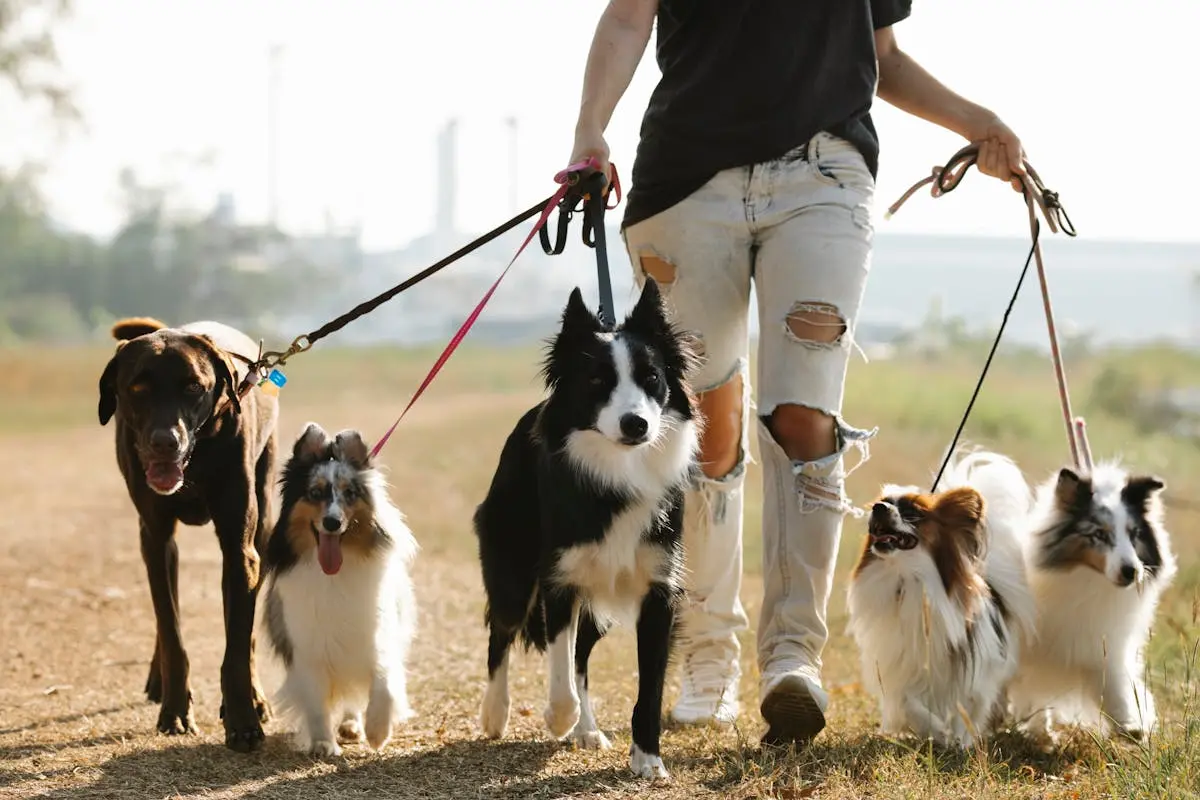Training your dog to walk on a leash is an essential skill that not only enhances your walks but also strengthens your bond with your furry friend. This guide will walk you through the process of leash training, offering tips and techniques to make the experience enjoyable for both you and your dog.
Understanding the Importance of Leash Training
Leash training is not just about getting your dog to walk beside you; it’s about establishing clear communication and boundaries. When your dog learns to walk on a leash, it opens up opportunities for enjoyable and safe adventures together. Whether you’re heading to the dog park or strolling through your neighborhood, leash training ensures that both you and your dog can navigate the world with confidence.
At its core, leash training enhances your relationship with your dog. Dogs are social creatures that thrive on companionship. When they understand how to walk politely on a leash, they are more likely to remain calm and focused during walks, which reduces anxiety for both of you. Moreover, it helps you create a structured routine that teaches your dog essential behavioral skills, making your outings pleasant instead of a battle.
Additionally, leash training can be a critical safety measure. A well-trained dog is less likely to dart into traffic or get distracted by other animals. This understanding can prevent accidents and ensure a pleasurable walking experience, which is particularly important in busy urban areas.
Choosing the Right Leash and Collar
Selecting the appropriate leash and collar is crucial for effective leash training. There’s a wide variety of products available, but choosing the right one can ultimately set up your training for success. Look for a collar that fits comfortably around your dog’s neck without being too tight or too loose; a good rule of thumb is that you should be able to fit two fingers underneath it.
When it comes to leashes, consider opting for a non-retractable one that provides better control. This type of leash allows you to maintain a consistent length, which is essential for teaching your dog the proper distance to walk beside you.
Additionally, evaluating the size and breed of your dog is essential when picking gear. For smaller breeds, a lightweight leash is usually preferred, whereas larger dogs may require a sturdier option. Remember, the right gear not only enhances training efficiency but also ensures the comfort of your dog during walks.
Starting with Basic Obedience Commands
Before you begin leash training, it’s necessary to establish some basic obedience commands, such as ‘sit,’ ‘stay,’ and ‘come.’ These commands help create a foundation for more advanced training and communication. Begin in a quiet environment free from distractions, allowing your dog to focus solely on you and their commands.
Practice commands while using a leash to condition your dog to be attentive to your cues even when outdoors. For example, use the ‘sit’ command to encourage your dog to pause before crossing streets or meeting other dogs. This practice reinforces a sense of discipline and respect, ensuring better behavior during walks.
Introducing Your Dog to the Leash
The initial introduction of the leash can be an exciting yet daunting experience for dogs. To make it positive, allow your dog to sniff and explore the leash while indoors before attaching it. This familiarity helps reduce any anxiety associated with the experience, transforming the leash into a friendly companion rather than a source of fear.
Next, attach the leash to your dog’s collar and let them walk around the house. This allows them to get used to the sensation of having the leash on without the stress of an outdoor environment. Gradually, introduce brief outings to your garden or balcony and offer plenty of praise and treats to encourage positive associations.
Teaching Your Dog to Walk on a Loose Leash
Teaching your dog to walk on a loose leash is often one of the most challenging yet rewarding phases of training. Start by holding the leash with a relaxed grip and encourage your dog to walk beside you. If they start pulling, stand still and wait for them to return to your side before continuing. This practice establishes the guideline that pulling will not get them where they want to go.
Employing treats throughout this process is essential. A treat can serve as an effective motivator for your dog to walk attentively beside you. Use the treat to lure your dog back to the appropriate position, rewarding them for staying close. Remember, consistency is key here—you’ll always want to reinforce this behavior with positive rewards.
As they begin to master loose leash walking, increase the duration and frequency of your walks. Gradually introduce distractions to cultivate your dog’s ability to walk well in various environments, such as busy parks or neighborhood streets. The more they practice in diverse contexts, the better they’ll become at focusing on you rather than their surroundings.
Dealing with Pulling and Distractions
Pulling on the leash is a common issue many dog owners face, but it can be managed effectively with the right tactics. One method is to change direction whenever your dog begins to pull. By doing this, you teach them that pulling doesn’t lead to their desired outcome. Instead, they will learn that staying near you is more rewarding.
In addition to redirecting their focus, it’s vital to practice self-control training exercises. Start with simple commands like ‘leave it’ when they get distracted by other animals or noises. Using methods like these cultivates their ability to ignore distractions, ensuring that walks remain enjoyable and safe for both of you.
Remember, patience is critical during this stage of training. Most dogs will require time to learn these skills, especially those with high energy levels. As you work towards reducing pulling, always be ready to adjust training techniques based on your dog’s unique personality and responses.
Positive Reinforcement Techniques
Positive reinforcement is at the heart of effective dog training. This method focuses on rewarding good behavior rather than punishing unwanted actions, which helps reinforce a trusting relationship between you and your dog. To implement this technique during leash training, consistently offer treats, praises, or playtime whenever your dog walks calmly beside you.
It’s essential to keep the rewards highly motivating. Use a variety of treats to maintain your dog’s interest. This variety will energize your training sessions, making them enjoyable for both you and your furry companion.
Additionally, incorporating playful elements into your training can create a more engaging atmosphere. Consider a game of fetch after a successful walk to celebrate their achievements. Such activities reinforce the bond of trust and respect, which forms the foundation for successful leash training.
Setting Goals for Successful Leash Training
Setting attainable goals is essential for successful leash training. Goals should be realistic, based on your dog’s current skills and behaviors. For instance, if your dog is new to walking on a leash, start with short walks around your home or yard. Gradually increase the distance as they become more comfortable with the process.
It’s also helpful to keep a training journal. Documenting your progress allows you to reflect on their growth and identify any challenges along the way. Celebrate milestones, no matter how small, as they reinforce positive behavior and reinforce your connection with your pet.
Troubleshooting Common Leash Training Issues
It’s important to remember that every dog is unique, and challenges are bound to arise during leash training. One common issue is resistance to the leash. If your dog shows fear or discomfort, take a step back and ensure they’re comfortable with all training equipment before proceeding. Modify your approach by introducing the leash gradually, ensuring they associate it with positive experiences.
Another frequent struggle involves reactivity to other dogs or people. In such cases, practicing distance training is beneficial. During walks, keep a neutral distance from potential triggers and reinforce calm behaviors with treats. Gradually decrease the distance over time as they become more comfortable with the presence of others.
Lastly, consider seeking the help of professional trainers or classes if certain issues persist despite your best efforts. Professional training can provide additional resources and techniques tailored to your unique situation, ensuring you and your dog thrive during your walks together.
Final Thoughts on Leash Training Your Dog
With patience and consistency, leash training can be a rewarding experience for you and your dog. Remember to celebrate the small victories along the way and enjoy the journey of learning together. Soon, your walks will be a breeze, filled with confidence and joy.


